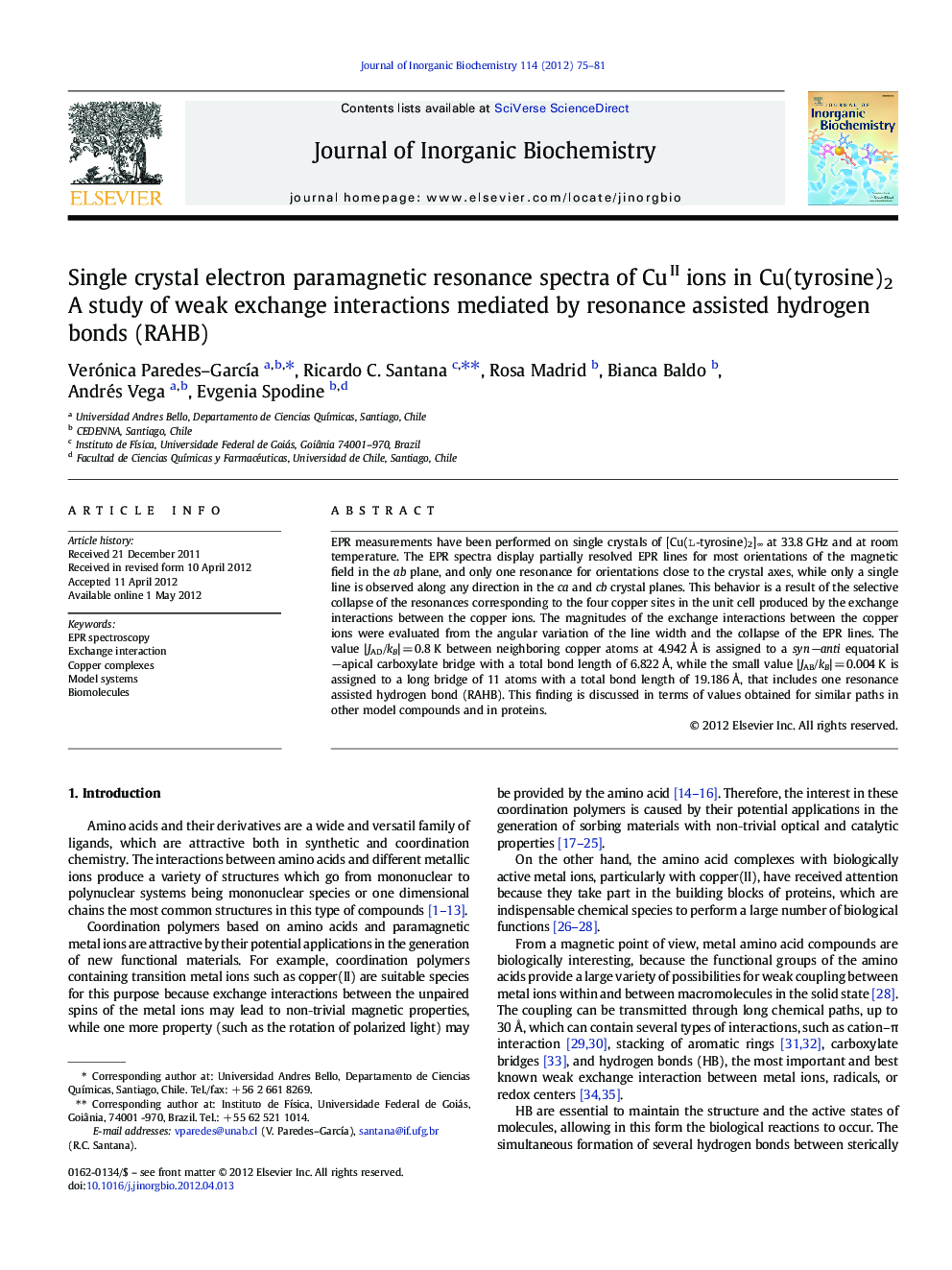| Article ID | Journal | Published Year | Pages | File Type |
|---|---|---|---|---|
| 1316465 | Journal of Inorganic Biochemistry | 2012 | 7 Pages |
EPR measurements have been performed on single crystals of [Cu(L‐tyrosine)2]∞ at 33.8 GHz and at room temperature. The EPR spectra display partially resolved EPR lines for most orientations of the magnetic field in the ab plane, and only one resonance for orientations close to the crystal axes, while only a single line is observed along any direction in the ca and cb crystal planes. This behavior is a result of the selective collapse of the resonances corresponding to the four copper sites in the unit cell produced by the exchange interactions between the copper ions. The magnitudes of the exchange interactions between the copper ions were evaluated from the angular variation of the line width and the collapse of the EPR lines. The value |JAD/kB| = 0.8 K between neighboring copper atoms at 4.942 Å is assigned to a syn−anti equatorial−apical carboxylate bridge with a total bond length of 6.822 Å, while the small value |JAB/kB| = 0.004 K is assigned to a long bridge of 11 atoms with a total bond length of 19.186 Å, that includes one resonance assisted hydrogen bond (RAHB). This finding is discussed in terms of values obtained for similar paths in other model compounds and in proteins.
Graphical abstractWe report single crystal EPR measurements for [Cu(Tyr)2]∞ through which it was possible to evaluate the magnetic interactions between nearest copper ions and to prove the ability of EPR to selectively measure very weak exchange interactions mediated by RAHB.Figure optionsDownload full-size imageDownload as PowerPoint slideHighlights► Electron paramagnetic resonance (EPR) measurements have been performed on single crystals of [Cu(L‐tyrosine)2]∞. ► Ability of the EPR to selectively measure very weak exchange interactions between paramagnetic centers. ► Resonance assisted hydrogen bonds can mediate the interactions between metal ions even at very long distances. ► Weak exchange interactions mediated by resonance assisted hydrogen bonds.
